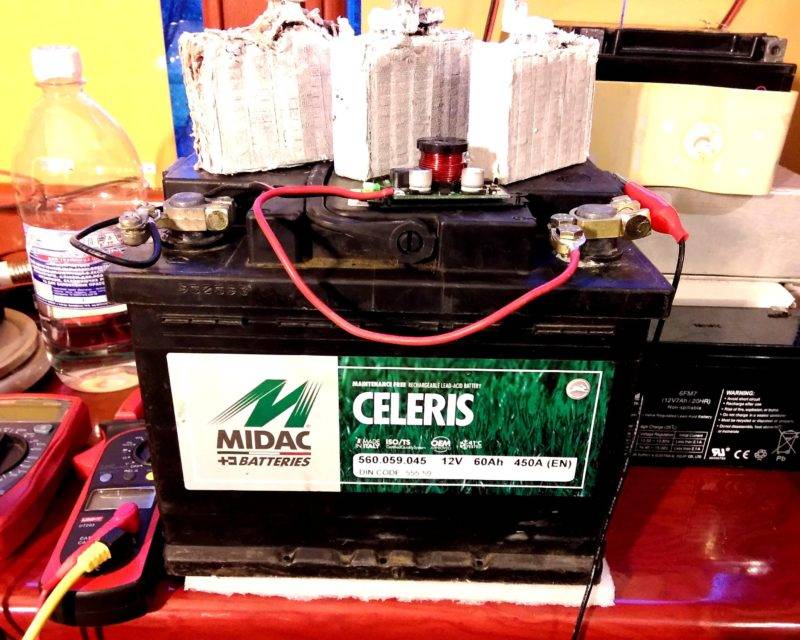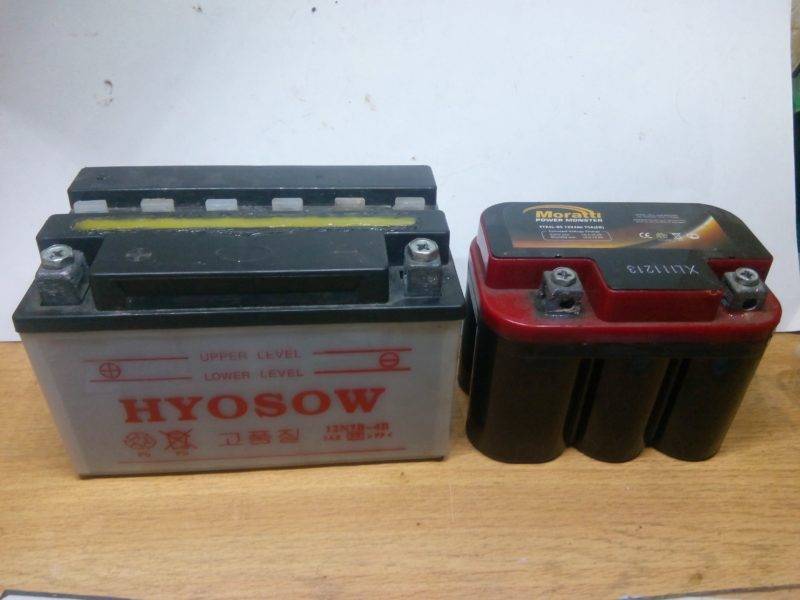The car battery has the important task of starting the entire device. It is also necessary to recharge the on-board network of the machine in case the engine is inactive. The battery (battery) may lose its working qualities in case of problems associated with the electrical system of the car, or starting the engine. There are two ways to solve the problem: purchase a new device or restore what you already have.
The recovery procedure can be applied not only to car batteries, but also to other batteries. Photo: i.ytimg.com
Is it profitable to restore
By itself, it is quite simple, and a properly restored old battery can last longer than an inexpensive “new thing”. In addition, self-determination of the source of the problem will avoid encountering similar breakdowns in the future.
Battery device
At its core, a car battery is a structure made of metal plates with opposite charges. To create them, lead, nickel or cadmium alloys are used. Sulfuric acid is placed in the central part of the battery, which is necessary for the formation of a galvanic couple. The whole structure is placed in a plastic case. When current is applied to the terminals of the device, energy accumulates in the battery.

After receiving a certain charge, the battery can provide a charge with a voltage level of 12 V. Photo: yakiru.ru
Starting a car starter requires a certain amount of energy, so as a result, the device is discharged. With a working generator, all losses are replenished while the engine is running. If this does not coincide with reality, then the battery will soon cease to cope with the tasks.
Causes of failure
Before undertaking a repair, it is imperative to identify and eliminate the source of the problem (this will also help determine whether the battery can be restored).
Such reasons include:
- Sulfation of lead plates. Occurs due to frequent and prolonged undercharges, or is a consequence of long-term storage in a discharged state. It is characterized by a rapid reduction in battery capacity, insufficient power level. Overheating of the entire internal contents of the battery and too high a voltage level at the terminals are noted.
- Deformation and shedding of coal plates. Sulfuric acid becomes dark in color. The device is practically unrepairable.
- Short circuit between lead plates. The electrolyte boils away and excessive heating of a separate part of the battery occurs. Exit: replacement of damaged elements.
- Storage at extremely low temperatures. Causes damage to the plates and outer protective coating, making subsequent recovery impossible.

There are several ways to restore a battery. Photo: ytapi.com
What are the ways to restore the battery
In order to reanimate the battery, various methods can be used:
- Multiple charging of the device from a low current source with occasional interruption of the process. Breaks are necessary to equalize electrode potentials in deep regions and on the surface of metal plates. This helps to reduce the voltage level on the battery as a whole, making it capable of further absorption of charge.
- Burning out the cause of the short circuit (if we are talking about this) with a high current (up to 100 Amperes). The method is not very safe and only helps in removing salt deposits.
- Dissolution of sulfates by applying high voltage (disulfation procedure). It is carried out with pauses (every 13 minutes) so that the gas evolution provoked by the increase in tension does not occur too intensively. The increase each time occurs by 0.1-0.2 V (the last limit is 14.8 V), until the capacity of the device stops increasing. At the beginning and end of the procedure, you will need to add some water to the acid solution (to achieve optimal density).
There are a number of other methods most commonly used for self-repairing the battery. We will talk about them below.
How to restore the battery with your own hands
When starting to repair a car battery, first of all, it is necessary to perform the following steps:
- Remove the terminals, inspect the device;
- If there is plaque on the lead electrodes (it can be white, green or blue), remove the bulk of it with a piece of unnecessary cloth, and clean the findings with sandpaper (preferably fine-grained);
- Try to connect the device.

If the problem was precisely in bad contacts, then after such a procedure, the starter should function normally. Photo: i.ytimg.com
Otherwise, you will need to charge-discharge the battery. In modern models, these two processes can occur simultaneously, providing the prevention of sulfation. More "older" samples must be connected to an energy source with a current strength 10 times less than the capacity of the device (voltage - 14.7-15 V). On such a charge, it should stand for 10 hours (a little more, but no less).
This is followed by a complete discharge. In order for the battery to start consuming energy, you need to connect a car light bulb to it. When the light goes out, the battery is charged again. The cycle repeats several times until the device recovers.
To get rid of the consequences of a short circuit, you can resort to the help of a desulfating additive:
- Mix the additive with sulfuric acid (electrolyte density - 1.28 g / cm 3) and let it brew for 48 hours;
- Pour the mixture into the battery and measure the density of the composition;
- With readings up to 1.28 g / cm 3, several cycles of charging and discharging the battery are performed;
- If the elements of the device do not overheat, then the current can be halved;
- After another couple of hours, the density of the liquid is measured, if it has not changed, then charging can be stopped, and the device can be considered restored.
Too dense filler must be diluted with water, and excessively rarefied - with sulfuric acid. When the composition of the solution is adjusted, you need to re-charge the battery.
Accelerated battery recovery option
For those to whom time is too precious, the following battery recovery option is suitable:
- Fully charge the battery;
- Drain the filler;
- Rinse the internal cavity of the battery with distilled water;
- Pour a solution of Trilon B (2%) and ammonia (5%) into the battery;
- After an hour, drain the mixture, rinse the “insides” again with distilled water;
- Pour in a fresh acid solution;
- Fully charge the device.
It is possible that the solution with Trilon B and ammonia will have to be poured additionally 1-2 more times. The process is considered complete if no gas evolution occurs when the mixture enters the device.
How to restore even a very old battery - see this video:
note
Here are some things to consider when repairing a battery:
- in sealed gel or AGM batteries, valves should not be opened, this leads to a loss of capacity;
- a complete loss of battery capacity is diagnosed at a voltage level of less than 10 V;
- the recovery process cannot be interrupted, all procedures and cycles must be carried out to the end.
When working with chemicals, you must always follow safety precautions and do not leave reagents in open containers and unattended.
Conclusion
Most battery failures are much easier to prevent than to deal with afterward. To do this, you just need to keep the terminals and leads clean, and also charge the car battery “to the eyeballs” every six months from a stationary source. Such simple care extends the life of the device to 5-7 years.







